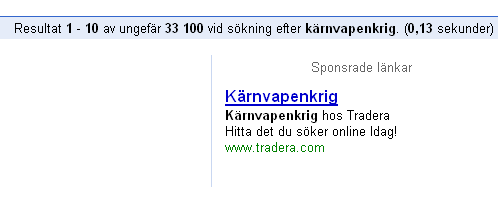Infektionsgraden på ett sjukhus minskade med 66%. När flygplan började bli komplexa att hantera så började man använda checklistor för att se till att allt blev rätt gjort. En amerikansk läkare, Peter Pronovost, har nu gjort detsamma för intensivvård. Åtgärderna är mycket billiga jämfört med vad man får ut.
I tidningen New Yorker finns det
en artikel som kombinerar ett oerhört angeläget ämne med en riktig god skribent, i detta fallet,
Atul Gawande, som beskriver Peter Pronovosts arbete och de fantastiska resultat det givit.
Det kan vara svårt att tro att intensivvård skulle kunna använda checklistor då problemen är så varierade:
I snitt behöver en intensivvårdspatient 178 åtgärder utförda på sig per dygn. En studie av 41'000 traumapatienter visade att de hade 1224 olika diagnoser i gruppen, i 32'261 kombinationer.
Ändå visar det sig när man prövar, att checklistor kraftigt förbättrar överlevnaden och kraftigt minskar antalet komplikationer vid intensivvård. Det visar sig vid övervakning att även om teamet kommer ihåg att utföra all steg rätt ofta, så missar de ibland. Det blir med checklistesystemet
sköterskornas jobba att se till att stegen efterföljs.
In December, 2006, the Keystone Initiative published its findings in a landmark article in The New England Journal of Medicine.
Within the first three months of the project, the infection rate in
Michigan’s I.C.U.s decreased by sixty-six per cent. The typical
I.C.U.—including the ones at Sinai-Grace Hospital—cut its quarterly
infection rate to zero. Michigan’s infection rates fell so low that its
average I.C.U. outperformed ninety per cent of I.C.U.s nationwide. In
the Keystone Initiative’s first eighteen months, the hospitals saved an
estimated hundred and seventy-five million dollars in costs and more
than fifteen hundred lives. The successes have been sustained for
almost four years—all because of a stupid little checklist.
...
I called Pronovost recently at Johns Hopkins, where he was on duty
in an I.C.U. I asked him how long it would be before the average doctor
or nurse is as apt to have a checklist in hand as a stethoscope (which,
unlike checklists, has never been proved to make a difference to
patient care).
“At the current rate, it will never happen,” he said, as monitors
beeped in the background. “The fundamental problem with the quality of
American medicine is that we’ve failed to view delivery of health care
as a science. The tasks of medical science fall into three buckets. One
is understanding disease biology. One is finding effective therapies.
And one is insuring those therapies are delivered effectively. That
third bucket has been almost totally ignored by research funders,
government, and academia. It’s viewed as the art of medicine. That’s a
mistake, a huge mistake. And from a taxpayer’s perspective it’s
outrageous.”
För några månader sedan var jag på föreläsning om systemutvecklingsmodeller inom IT och en forskare visade fantastiska resultat från verkliga världen. När vi i auditoriet började analysera stegen så var det en checklista som var det unika för modellen. Kanske han var något på spåren?
Läs mer:
Annals of Medicine: The Checklist: Reporting & Essays: The New Yorker
